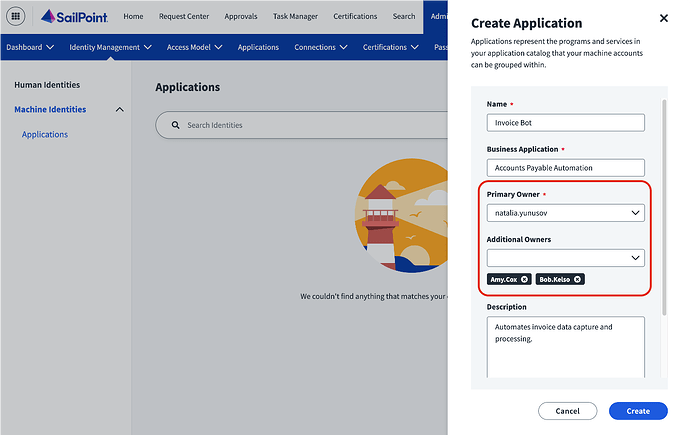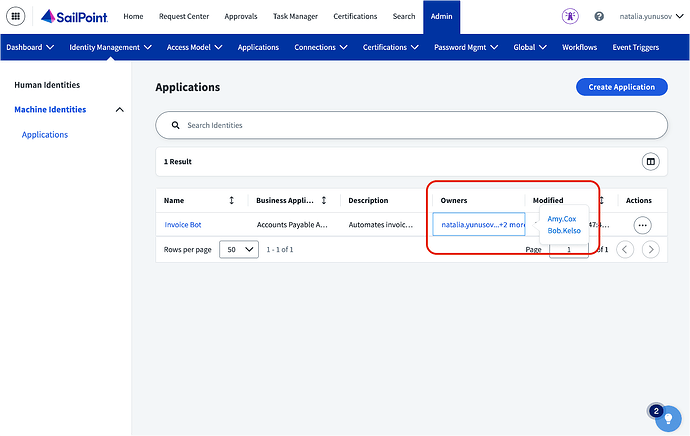Description
Ownership of Applications just got more flexible and resilient. Admins can now assign multiple owners to each Application and rely on automated succession planning if a primary owner leaves. This ensures accountability, reduces the risk of orphaned Applications, and provides clear visibility into ownership responsibilities.
This update also introduces subtypes for Machine Identities, starting with Applications. All existing machine identities have been migrated to the Application subtype, laying the groundwork for additional subtypes in the future.
New Capabilities
- Applications (Machine Identities) now support multiple owners.
- Automated succession planning ensures continuity when owners leave.
- Ownership visibility on Human Identity detail pages.
Problem
Previously, Applications could only have a single owner. If that owner left the organization, responsibility became unclear, creating orphaned Applications with no accountable owner. Admins also had no easy way to see which Applications a person owned, slowing down troubleshooting and succession planning. In addition, machine identities were treated as a single broad category, without subtypes to distinguish between different use cases.
Solution
Applications can now have multiple owners. The first selected owner is designated as the Primary Owner, while additional owners are added as Secondary Owners (up to 10). In the Application grid view, owner names are displayed directly. When multiple owners are assigned, the first owner’s name is shown along with a count, and selecting it reveals the full list of owners with access to each person’s Human Identity details.
- Succession planning keeps ownership up to date:
- If a Primary Owner leaves and Secondary Owners exist → the next active Secondary Owner becomes Primary.
- If no Secondary Owners exist, the owner’s active Manager is promoted to Primary.
- If neither are available, the Primary Owner field is left blank until updated manually.
- If a Secondary Owner leaves, they are automatically removed from the list.
- Admins can always make changes manually using the Update Identity action.
- All changes are audited, allowing admins to track when the owner changed and the reason for the change.
We’ve also improved ownership visibility. On the Human Identity detail page, admins can now see which Applications a person owns, either as Primary or Secondary Owner. This makes it easier to understand responsibilities at a glance and proactively plan for succession.
Create Application – Assigning Owners
Application Grid View with Multiple Owners
Update Identity – Editing Owners
Human Identity Detail Page – Owned Machine Accounts and Applications
Succession Planning – Audit event when the primary owner leaves
Who is affected?
Customers who have licensed Machine Identity Security.
Action Required
We encourage admins to review Application ownership and assign secondary owners to maintain clear ownership and reduce the risk of orphaned Applications.
Important Dates
- Sandbox Rollout: September 1st, 2025
- Production Rollout: The week of September 8th, 2025.




